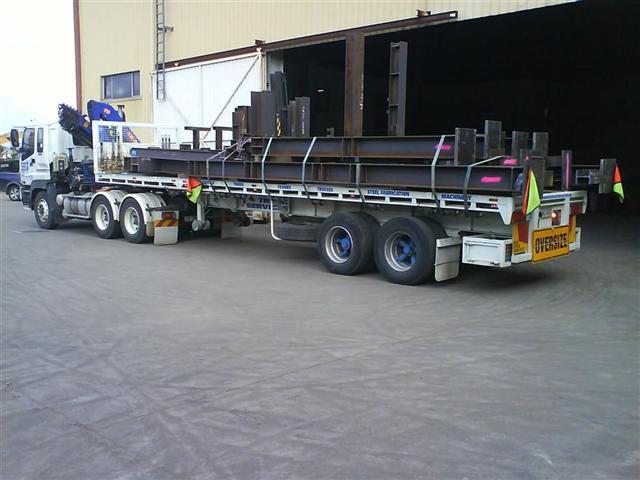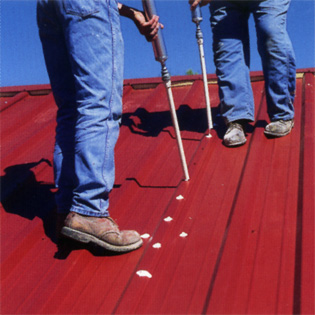We just paid 11,000 $$$ for a new metal roof from the lovely people at Pro Max in Decatur, IL. Thanks Dean! We could have gotten the same roof in asphalt for 7,000 or 8,000 $$$s. Some people would say that is a negative right there. But what is 4 or 5,000 $$s among friends when the life of the roof could easily be 50 years?. Not only that but it lowers your homeowners insurance enough that the payback times must be in like 5 years. Especially with how much it can save in energy consumption:
http://www.energystar.gov/index.cfm?c=roof_prods.pr_roof_products
Reflective Roof Products for Consumers
(Are you a partner? For Partners)
Americans spend about $40 billion annually to air condition buildings — one-sixth of all electricity generated in this country.

Why choose ENERGY STAR reflective roofing for your building?
- ENERGY STAR qualified roof products reflect more of the sun’s rays. This can lower roof surface temperature by up to 100F, decreasing the amount of heat transferred into a building.
- ENERGY STAR qualified roof products can help reduce the amount of air conditioning needed in buildings, and can reduce peak cooling demand by 10–15 percent.
During building design and when your existing roof needs replacement are both excellent times to consider reflective roofing. See how much reflective roofing can reduce your building’s energy costs .
What is emissivity and why is it important to cool roofs?
Read more about emissivity and how it relates to energy savings and cool roofs.
How does roof insulation relate to ENERGY STAR labeled roof products?
The ENERGY STAR energy-efficiency criteria do not include a specification for roof insulation. However, in addition to reflectivity, roof insulation (measured by the R-value) plays an important role in building energy consumption for heating and cooling. The colder the climate, the greater the need for a higher R-value to ensure that less heat is lost from the building envelope. To determine the minimum R-value for a given location, refer to the International Energy.
:}
http://www.wbdg.org/resources/coolmetalroofing.php
Cool Metal Roofing
by the Cool Metal Roofing Coalition
Patrick Bush, U.S. Steel; Greg Crawford, AISI; Scott Kriner, MCA; Todd Miller, Classic Products; Charles Praeger, MBMA; James Robinson, Architectural Metals Systems; Robert Scichili, BASF; Lee Shoemaker, MBMA
Last updated: 02-13-2007
Introduction

Metal roofing has been available and utilized as a roofing material for centuries. Metal roofing is available in a wide variety of substrates, colors, textures, and profiles. Though diverse in appearance, metal roofing has many common attributes such as durability, recycled content, recyclability, fire resistance, low weight, and low life-cycle cost.
Depending upon the surface finish, cool metal roofing can provide enhanced energy efficiency with its solar reflectance and infrared emittance properties. In fact, the solar reflectance and infrared emittance of a metal roof can be engineered to meet the climate requirements of the building. Cool metal roofing can provide the desired high reflectance and low emittance in climates where heating loads prevail. Cool metal roofing can also provide the desired high reflectance and high emittance where cooling loads dominate. Cool metal roofing easily meets the requirements of the EPA’s Energy Star® program. Cool metal roofing is also eligible for other cool roof incentive programs:}
http://ezinearticles.com/?Metal-Roof-Cost—Common-Myths-Debunked&id=2078869
Metal Roof Cost – Common Myths Debunked
By Chris Xavier
Out of the box, metal roof cost can seem astronomical when comparing it to a traditional asphalt shingle roof. But to just compare absolute material cost and no other factors is not comparing “apples to apples”. Metal roofing does not get its cost effectiveness from its materials. To better understand the expense, we are more apt to examine the differences in an asphalt roof versus a metal one.
Asphalt always looks like a bargain. At approximately one third of the metal roof cost and warranty slapped on the package boasting twenty years or better, it seems clear to the uninformed that an asphalt roof will provide the same performance at a fraction of the payout. Over our time, warranties have become more a tool for marketing than a display of quality. We, as consumers, take it as a company standing behind their product for a specified amount of time but the details are in the small print. Don’t take it wrong, there are a lot of great warranties out there but it’s key to understand their limitations and fine print when taking warranties into account.
Upon further examination, we see that most shingle warranties do not cover the shingles to their claimed lifespan. Instead, the company heavily pro rates the value so if and when you were ever to file a warranty claim, you would not recover the amount of the initial product. Also, these warranties do not cover the cost of labor of the initial job or replacement.
The second biggest myth that homeowners face when comparing metal roof cost to asphalt are the effects of the environment has on them both. Your climate can bring some of the harshest conditions we could ever imagine. Scorching heat, hail, rain, sleet, snow, tornadoes, wildfires, and hurricanes are some of the environmental conditions we face in the United States. As these conditions get more extreme, the more asphalt shingles fail and the more often they will need to be replaced, thus increasing ownership costs and maintenance requirements.
:}
http://www.themetalinitiative.com/content/building_with_metal/benefits/sustainability/s_coolmetalroofing.cfm
Cool Metal Roofs Help
Put Lid on Rising Energy Costs
A roof has a significant impact on the energy use of a building. As a result, building owners and their architects have discovered that it pays to specify building products such as “cool metal roofs” to help avoid unwanted heat build-up inside the building and to help ensure maximum energy conservation. Buildings consume one-third of all energy and two-thirds of all electricity generated in the U.S. But, commercial metal roofs with heat-deflecting coatings and finishes can drastically lower the energy consumption rate by reducing cooling loads. In the process, these roofs can save building owners up to 40 percent in heating and cooling energy costs, perhaps more if used in conjunction with insulation under the roof surface, according to the Oak Ridge National Laboratory.
At the same time, highly emissive roofs benefit the environment by lowering urban air temperatures, thereby helping to reduce smog. They also offer a solution for communities searching for ways to control the demand for electricity.
Cool Roof Performance Depends on Reflectance, Emittance
The performance of a cool roof depends on two properties: solar reflectance and infrared emittance. Solar reflectance indicates the percent of sunlight reflected off the roof. Emittance indicates the percent of the sun’s heat re-radiated from the roof to its surroundings.
Available unpainted, with baked-on paint finishes, or with granular-coated surfaces, cool metal roofing can reflect up to 70 percent of the sun’s rays, resulting in less heat transfer to the interior of the building. The emittance of painted or granular-coated metal roofing can be as high as 90 percent.
:}
And for you do it yourselfers out there:
http://urbanhomestead.org/journal/2007/01/04/done/
Wasn’t This Worth Waiting For?
Just in time for the rain storm tonight. Tonight’s rain [hence the dreary looking photos – I’ll take better pictures when the sun comes out] will fall on a new sustainable metal stone coated roof. Justin read that this type of process was developed in WWII. The reflective metal roofs on buildings were attracting enemy planes so folks put tar on the metal and over that ground up stone or sand. Such stone coated metal roofs are commonly used in New Zealand. Jules’first homestead in the rural South Island (NZ) had a corrugated metal roof which collected and diverted the rainwater into a huge cement cistern. Now we have an “upgraded” metal roof and we once again plan to harvest the rainfall and it use to irrigate the garden.
For those of you who have been following the roof saga since summer you are probably glad you won’t read about the “R” word anymore. Truthfully, this project wasn’t as easy as you would think – believe me. We spent many sleepless nights and stressful days agonizing over this decision. Looking at the 4? thick folder of all the types of roofing that we looked at Justin would comment “choosing a roof is like getting married, the only thing is you can’t get divorced if it doesn’t work out.”
Time for high fives, pats on the back and hugs all around – time to celebrate !!!! A friend of ours dropped by yesterday with a bag of goodies to “celebrate your new roof.” How kind and thoughtful! Of course he couldn’t help but admire and question in amazement “that’s metal?” Speaking of admiring these last few days you’ll find us pausing as we work in the garden just to admire the roof.
:}
But you say how much energy does it consume vs. a shingle roof. I don’t know, but I will try to find out for tomorrow.
As always please read the complete articles and attachments above for many more details.
:}















